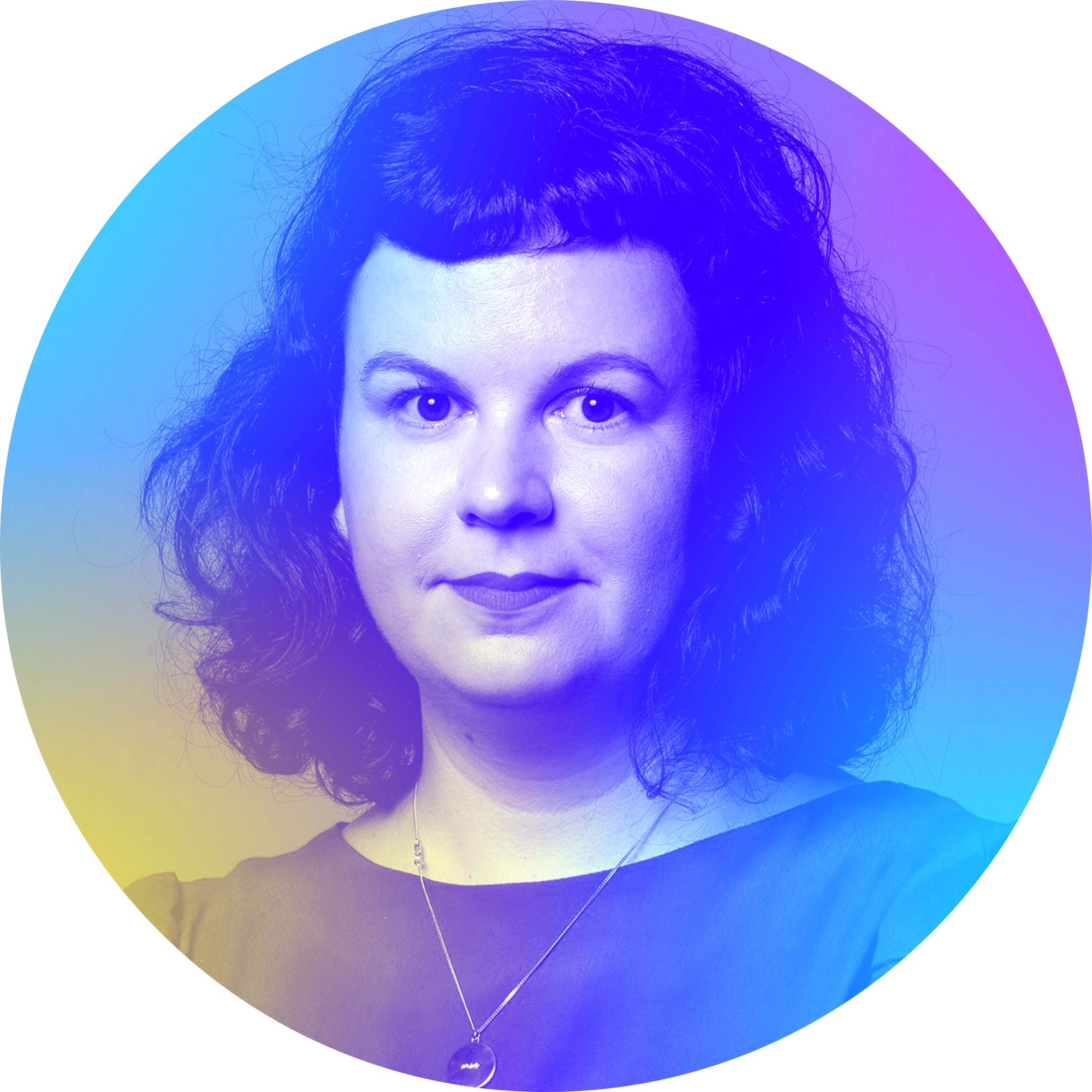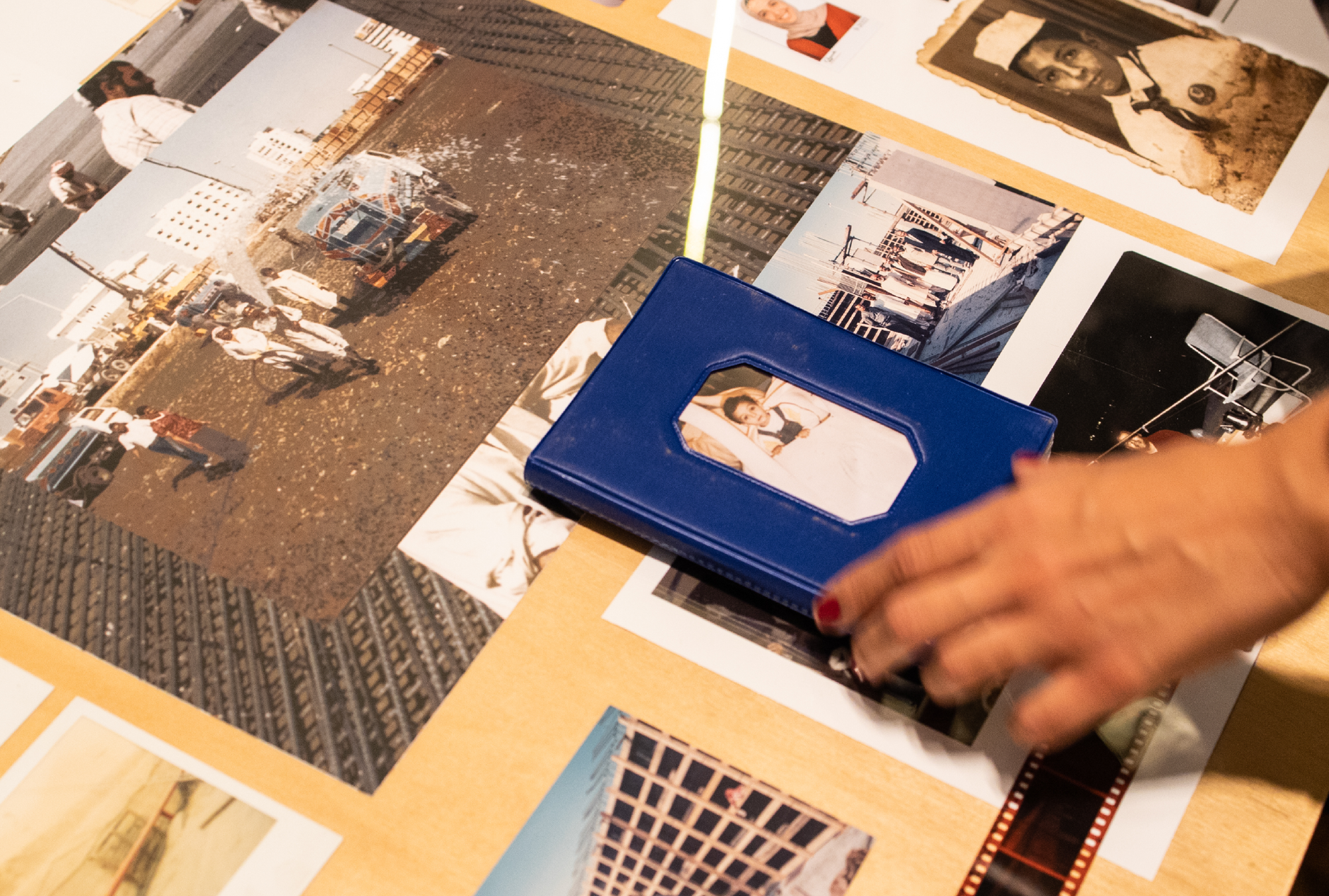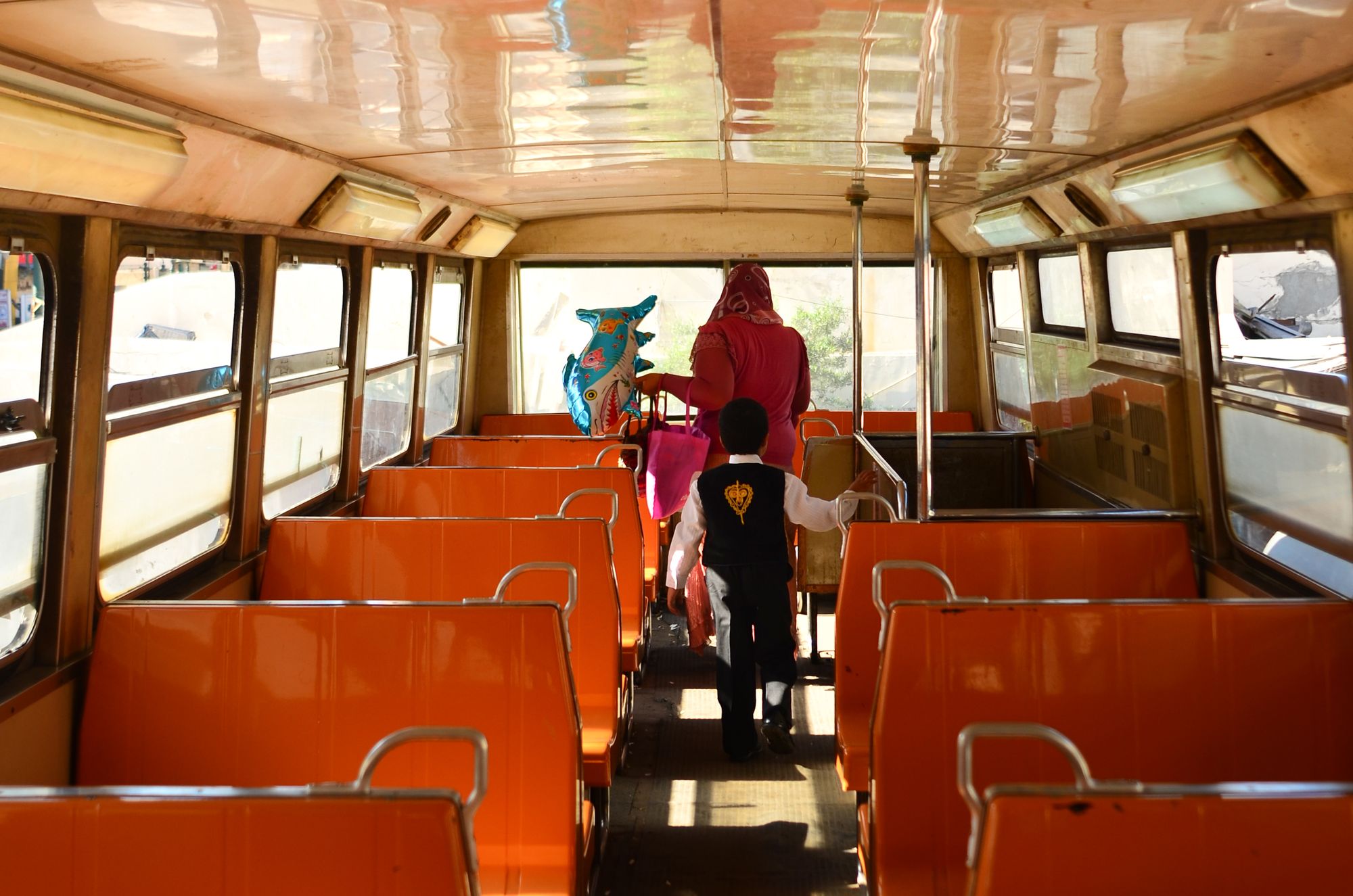
Tereza Bettinardi loves multitasking. She logs into our Zoom call from Sevilla, Spain, wearing a colorful sweater and a huge smile. Between sangrias and exhibitions, she’s coordinating the last details for relaunching Clube do Livro do Design as a publishing house, and still finds time to oversee the redesign of our very own Futuress website.
In 2000, Tereza started studying Journalism at the University of Santa Maria, a sleepy college town in Rio Grande do Sul, Brazil. During a months-long university strike at the beginning of her degree, students banded together to build a website for their course. Tech-savvy and versed in the early web, she was chosen to design the site—a role that swiftly awakened in her a burning passion for graphic design. This led her to pursue another Bachelor’s degree in Graphic Design, and later to move to São Paulo to start a career in publishing, the perfect meeting point for both of her passions.
She began as a freelancer at one of the biggest publishing houses in the country, Editora Abril, working on their science magazine Superinterssante, and their teen-girl magazine Capricho. After Abril, Tereza worked as an assistant to the famous Brazilian graphic designer Kiko Farkas, an experience that taught her a lot about book covers, branding, and visual identities. But as the only woman in the office, she found the environment challenging. Reflecting on her experience there, she states: “I couldn’t name it at the time, but in hindsight, I know there were issues.” In 2012, Tereza joined Cosac Naify, a now-defunct publishing house focused on art, architecture and design, where she worked on a mostly female team led by the renowned Brazilian designer Elaine Ramos. Work was very demanding and strict, and the salary was very low, but the experience was life-changing for Tereza. However, after two years there, she needed to earn more, and also craved to design outside the “modernist-high-culture aesthetic.”
After freelancing for four years, in 2018 she hired her first employee. Today, Tereza has two designers working under her: Lucas D’Ascenção and Gabriela Gennari, both based outside São Paulo in Brazil. Managing others was the catalyst that brought out the “businesswoman” side of her, but Tereza’s diverse work experiences really helped her to see what she wanted to do differently as a leader. She is concerned about motivating her team and building a space where everyone feels like they are growing. “How can we create exciting conversations for all sides? How can we all learn something new in every project?” Tereza poses some of her burning questions. In this conversation, we talk about bridging design and feminism, being restless, and using anger as a driving creative force.
Nina Paim: You and the studio have been engaging in a lot of feminist projects and working with outspokenly feminist actvists and advocates in Brazil. How do you engage with feminism, and how do you practice feminism in your work?
Tereza Bettinardi: When I started working as a designer in the mid-2000s, I experienced lots of micro-aggressions and instances of gender discrimination, which I couldn’t put into words at the time. Maybe for people today this might sound shocking, but for my generation—and I’m still young; I’m in my mid-30s!—this was not openly discussed. Today we can name it, but at the time I never asked myself: “Are they saying this because I’m a woman?”
“I looked around and noticed that my male colleagues, who were the same age as I was, were not facing the same issues. At some point, it just clicked: ‘This is happening. It’s because I’m a woman.’ When I had this enlightenment, I realized that I needed to educate myself in order to defend myself.”
I’m from the South of Brazil. Brazil is sexist in general, but in the South there’s a whole extra layer of sexism due to the Gaucho culture. Then I found myself in a big city like São Paulo, working by myself and having to negotiate my work and my wages. There were so many times, with clients or with coworkers, when I just felt sheer aggression. I looked around and noticed that my male colleagues, who were the same age as I was, were not facing the same issues. At some point, it just clicked: “This is happening. It’s because I’m a woman.” When I had this enlightenment, I realized that I needed to educate myself in order to defend myself. I had to become a transformer. I had to grow an armor. I had to fight back.
What you describe sounds very much like what feminist author Sara Ahmed describes as a “feminist snap”—a moment when something clicks, and it just completely changes your perspective to everything that you have experienced up to that moment. All of a sudden you’re able to read these past experiences in a completely new light, and you understand that these were instances of abuse or discrimination, whereas up to that point you may have been unsure.
Exactly. Small things like you’re in a group or a meeting, and men start talking to themselves and ignoring you because they don’t think you have anything meaningful or relevant to say. Some men seem to love explaining my own work to me. There’s small micro-political things, and big structural things, and all of a sudden you can see them all; everything gets unveiled in front of your eyes.
But thankfully, times have changed. Around 2016, I started being invited to design more “feminist” materials. It began with book covers, which have been a huge chunk of my work since I became a freelancer. I designed all the covers for translations of works by [the American author and activist] Rebecca Solnitt and Heloísa Buarque de Holanda [a prominent Brazilian feminist sociologist]. At a certain point, I noticed that this was all I was getting: feminist projects, again and again and again, which in a way is also tricky, because sometimes I feel cornered into that position. But I’ve learnt a lot by reading those books.
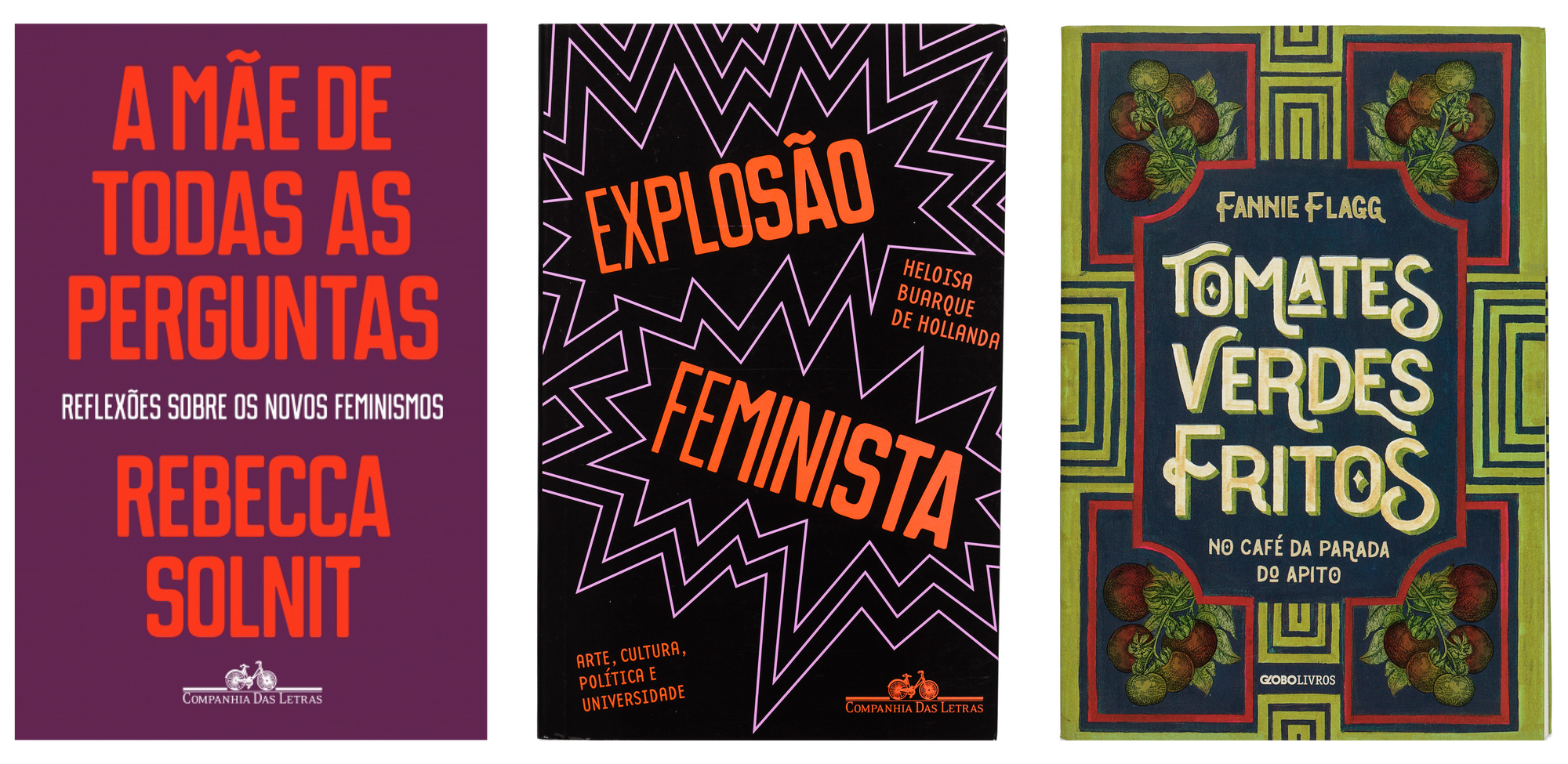
It’s a totally different experience to work with and for women in a feminist context. In a way, it has been a blessing to grow this network. I feel that we are growing with them, and that we are in this together. Many times I ended up talking to my women clients about the abuse and violence that they suffer or have suffered. We’ve been discussing and debating more, and this helps us to grow stronger.
I want to pivot to your engagement with education, and specifically the self-organized Escola Livre, which you co-initiated in 2014 with fellow designer and friend Guilherme Falcão. Can you tell us more about that?
Anger is my motto, you know? That describes me well. In 2014, we were having a very heated public debate about regulating the design profession. A group of designers started lobbying for the Senate to approve a new law that, in order to be legally recognized as a designer, one would have to have a university degree. This is a very elitist policy for a country like Brazil where, despite recent public efforts, a degree is still a privilege of the few. The new law would mean that anyone practicing design without the required qualifications would be liable to prosecution, and competing in public bids would become an exclusive privilege to the so-called “regulated designers.”
“The design community in Brazil is already very competitive and exclusionary, so my friend Guilherme [Falcão] and I began to crave having a space where we could counter those elitist arguments. We wanted to steer conversations in another direction.”
Supporters argued that the law was meant to value and promote “good design,” but their arguments were mostly centered around the question of who could call themselves a designer. The consequences for design education would be cruel. It felt extremely elitist and conservative: it wasn’t an effort towards unionizing designers to get better wages, but a means of excluding the self-taught—those who became designers by working instead of studying. Though insane and absurd, their argument seemed to be getting more and more traction. The design community in Brazil is already very competitive and exclusionary, so my friend Guilherme and I began to crave having a space where we could counter those elitist arguments. We wanted to steer conversations in another direction.
In a nutshell, this is what sparked Escola Livre, which means “free school” in Portuguese. We started by interviewing other designers, because we wanted to know what their beliefs were. Then we started organizing workshops, which gave us some debating experience. Slowly, we started growing a community of people who were similarly unhappy with the design field, and we started thinking together about alternatives, and how design could be less competitive and more inclusive.
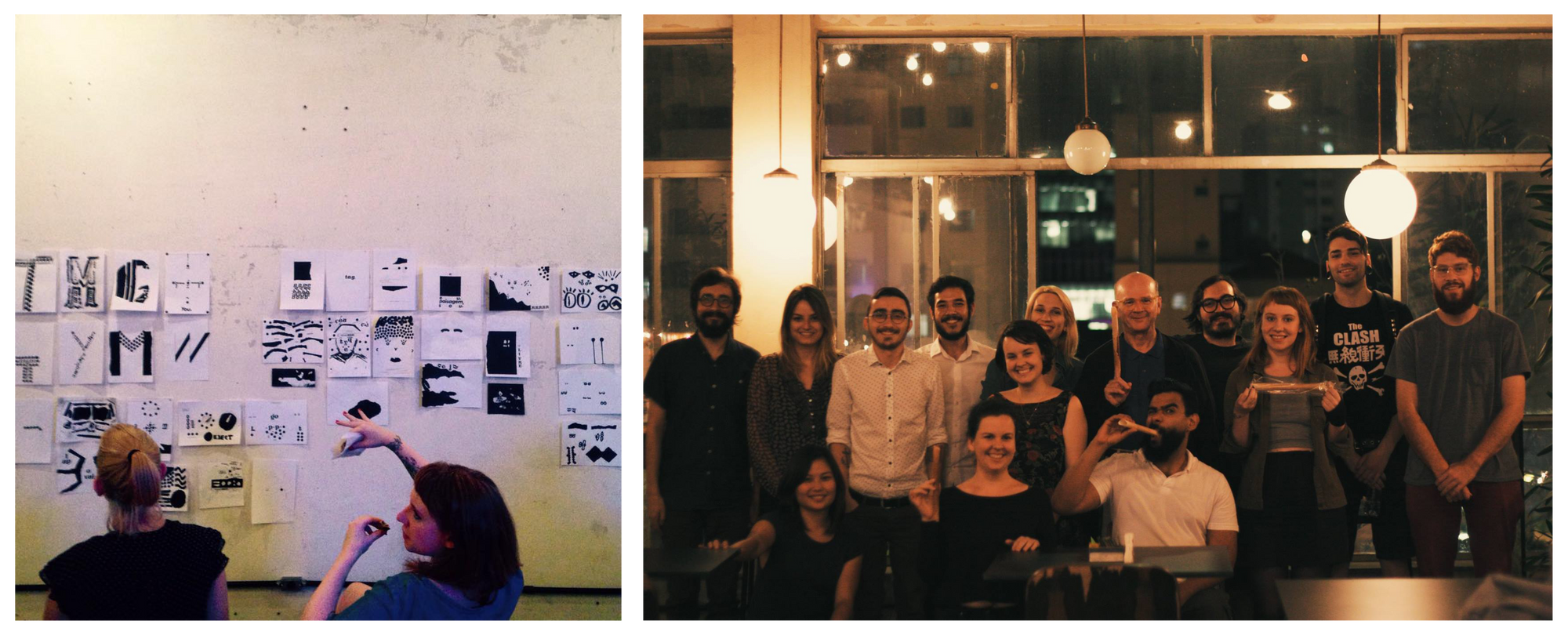
This was a real issue for me when I first moved to São Paulo. Next to gender discrimination, I also faced multiple forms of class discrimination. In Brazil, successful designers, especially those working for the cultural sector, come from extremely privileged backgrounds—upper middle-class and beyond—with lots of networks. People still have this idea of: “Oh, I really want to work with books,” or they want to design for museums or galleries, as if this were more pure and valuable than working for, say, a bank. Can you be so sure the art world isn’t as speculative as the financial market? In Brazil, this discourse around “designing for culture” veils the upholding of a certain class structure. This is something I absolutely thought should be addressed, and I think we’ve succeeded in leading some discussions in that direction.
Is that how you got involved in teaching?
Yes, after Escola Livre, we started getting invited to teach, mostly in private institutions, since public universities in Brazil require heavily regulated public competitions to hire new teachers. But it was tricky. I really wanted to occupy those spaces of learning, to be there and share my thoughts, but I started facing all the issues that come with private education.
“The school [I taught at] charges super-expensive tuition fees, and the course is geared towards promoting this narrative of graphic design being an exclusive and special profession. I just didn’t want to be part of that.”
I had the opportunity to coordinate a continuing education program at a private school. That ended up being quite frustrating because, in the end, I realized it was all about money. The school charges super-expensive tuition fees, and the course is geared towards promoting this narrative of graphic design being an exclusive and special profession. I just didn’t want to be part of that. But just by being part of the institution, I was sort of defending that idea, and being complicit with it. They were using my image to sell courses! Eventually, it all became so frustrating that I decided not to teach anymore, at least not in private institutions, because I realized that I don’t believe in that system.
I would perhaps have liked to teach at a public university, but since I’ve made my career as a practitioner, which means I don’t have a Masters or a PhD, that won’t happen. I once briefly taught at the State University of Campinas, also called UNICAMP, in São Paulo, but I was invited as “the person from the market.”
In 2020, in the middle of the first COVID-19 lockdown, you started the Clube do Livro do Design, an initiative that seems to bridge a lot of your interests, between teaching and learning, community building, but also design and publishing. How, how did it all come together?
Remember I said, anger is my motto? Anger makes me do things. In the first weeks of the pandemic, a lot of people started promoting this “panic discourse” that the world is changing and everyone needs to adapt—you need to stay agile, you need to pivot, you need to learn a new skill, you need to learn motion because everything is going to be online now, in the metaverse. People wanted to be in control of the future at a time of total and complete utter unknown. The underlying message was that you need to give up everything that you’ve learnt so far, and turn into something totally different.
For me, this was particularly scary. Okay, I might need to learn something new, but I cannot give up everything I’ve been building over the last 17 years designing books. I spent hours in my room, looking at the ceiling, scared about the future. Then I realized that a lot of people were offering online workshops and courses, but they were very expensive. I couldn’t understand how, in a moment of so much insecurity, people could pay so much money for a course.
“ I realized that [during the pandemic] a lot of people were offering online workshops and courses, but they were very expensive. I couldn’t understand how, in a moment of so much insecurity, people could pay so much money for a course.”
At the same time, Ruben Pater’s The Politics of Design was just being published in Brazil, and I was asked to do an online review. I remember recording this video, which took me a whole afternoon, and at the end I thought, “Oh, this was very fun!” I felt like discussing the book with others, as I really wanted to know what other people thought of it. I’ve always loved sharing books on social media, and when I mentioned it in my feed, suddenly a lot of people started sending me direct messages on Instagram, asking for more book recommendations. So then I started thinking: “How interesting would it be if we all just started reading together? Let’s have a book club!” Since I had never participated in a book club before, I turned the idea into a design task: “Let’s think about what a ‘design book club’ could be.”
I discussed the idea with Bruna Knabem, my friend who’s also a producer, and together we started sketching the book club experience. I made a list with books I wanted to share with others. We designed the whole program in one week and announced it online. At first, we were expecting that maybe 30 people would apply, so we were shocked when suddenly we had more than 300 applicants. Wow! We had to adapt what we had designed, but we ended up having lots of amazing discussions. We also created a scholarship program, and were even able to offer free copies of all books to some participants. It was really magical to have so many different people joining the conversation from all corners of Brazil, sometimes from small cities that don’t have big design studios. The conversations reached a whole new level. Above all though, what we realized—in fact, it was our first reaction while selecting books—was: graphic design books in Portuguese are still very limited, and this should change.
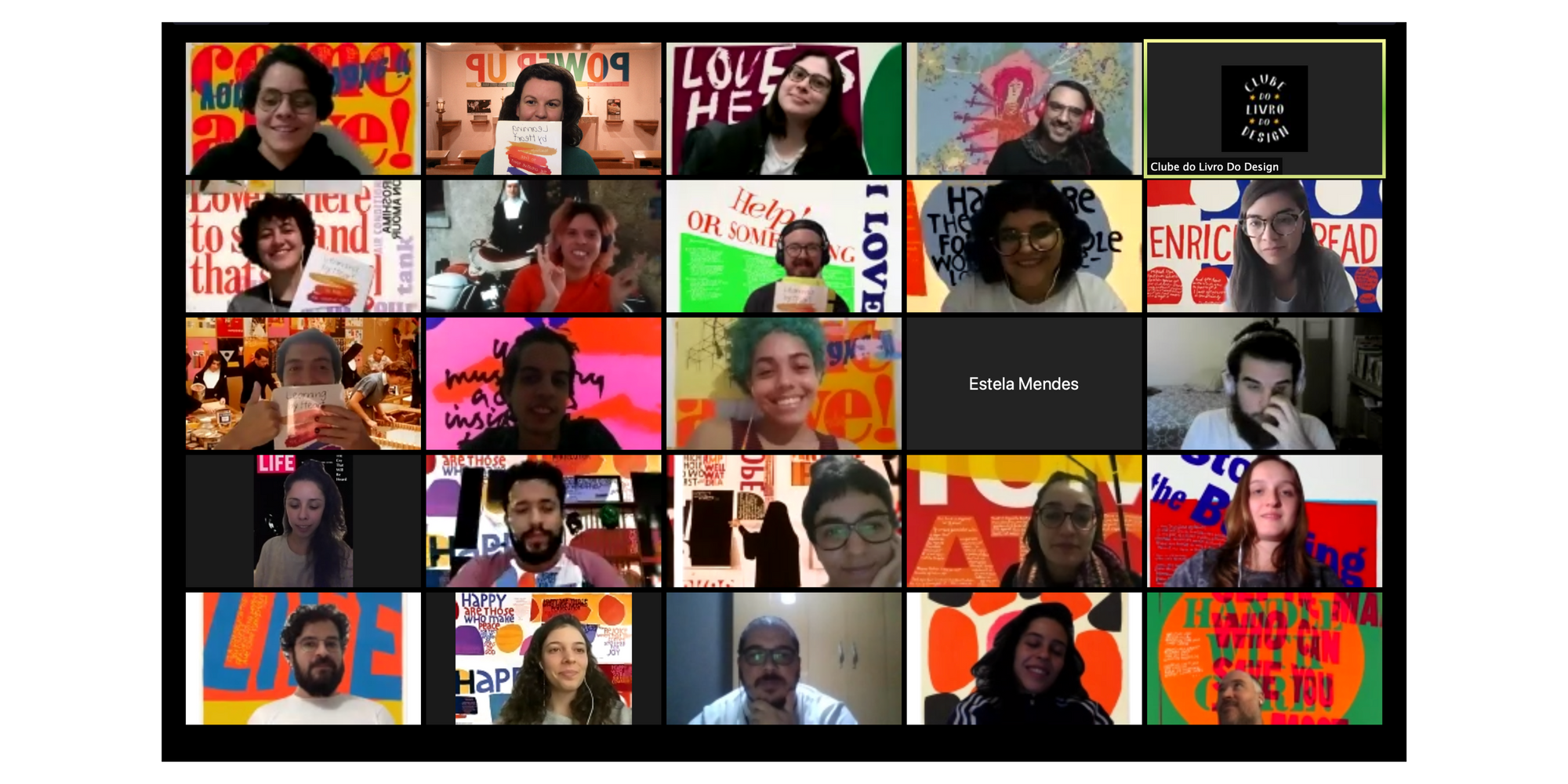
How did the Clube do Livro do Design morph into a publishing house?
Having a design publishing house has been a dream since I was a student. After the success of the book club, I decided: okay, let’s try this! We’ve just published our first book, which is a translation of Natural Enemies of Books, by the MMS collective.
It’s a very special book to be the first. Can you talk about that decision?
When I first saw the title, I was already hooked! But then while reading it, I realized the book makes such a great statement. It’s about feminism and gender issues within the design and print industries, but it also doesn’t ignore class. Although it doesn’t fully address issues of race, it doesn’t ignore it either. After everything we debated in the Clube do Livro, it felt like just the right book we needed to publish. I also had huge support from Sara de Bondt from Occasional Press and MMS, who agreed to sell the rights of the book once the book was fully crowdfunded. The campaign was so thrilling, and its result was that 630 people supported the book, which really showed me that it is possible to make great things together.
We’ve been observing a surge of interest for design activism in Brazil, which manifests for example through Instagram accounts with large followership, such as @designativista, but also other initiatives. How do you feel about that?
This is a topic that has been around at least since my times as a design student, and I always found the discussions shallow and flat. Designers love talking about social design as something “altruistic,” peddling the “we are saving the world” narrative. A while ago, I attended a public discussion on social design at a museum here in São Paulo. The debate was again going in that direction, so I raised my hand and said: “For me, social design is paying your interns,” and everybody looked at me as if I was an alien.
But design activism does indeed seem to be a hot topic right now in Brazil. I see a lot of students centering their final project around design activism. But activism should not be a topic. It’s something we should do. When activism becomes a topic disconnected from life, it’s just really shallow—this idea that we can fight climate change with a poster! I get very suspicious of these initiatives; who are they serving?
“My activism is my practice. [...] For me, the work is in the micro-politics of daily labor. And it’s a work in progress; it will never be finished. It’s about thinking about one’s reality, and cultivating meaningful relationships with others.”
For me, everything is connected. It bothers me when people make bold statements about the climate crisis, saving the environment, or whatnot, while I know that they don’t treat people well. That sounds obvious, but in practice, it’s not. I see many people promoting “social design,” while in their daily practice, they don’t treat their employees with dignity, they don’t want to pay the fair price for your work, or they don’t give you credit for your work.
My activism is my practice. Before I start voicing my opinion out loud on how we can solve world problems, I need to take care of my own house first. For me, the work is in the micro-politics of daily labor. And it’s a work in progress; it will never be finished. It’s about thinking about one’s reality, and cultivating meaningful relationships with others. In the end, one thing is sure: graphic design won’t save the world, but we can still treat each other well.
Tereza Bettinardi (she/her) is a designer, researcher and editor who works and lives in São Paulo, Brazil. She began her career in 2006 and worked for major Brazilian and Latin-American publishing companies for almost a decade. In 2014 she set up her own studio, which has since worked across different fields of design, including editorial, visual identity, packaging and environmental design. Tereza has taught at several design schools in Brazil and regularly lectures at design conferences, universities and companies on subjects including editorial design, visual culture, design process and everyday political implications of a designer’s routine.
In parallel to commissioned projects and as part of her interest in combining writing with her graphic design practice, Tereza co-edited A Escola Livre: Entrevistas [vol.1], a book of interviews with several Brazilian graphic designers conducted as part of A Escola Livre (The Free School, 2014-18), an experimental educational project in design. She recently wrote the chapter "Bea Feitler: The Sir to Ms. Years" published in Baseline Shift: Untold Stories of Women in Graphic Design History (Princeton Architectural Press, 2021). In 2020, she founded Clube do Livro do Design, a virtual book club turned into a publishing house devoted to expanding the range of design writings available in Portuguese.
Nina Paim (she/her) is a Brazilian designer, curator, and editor based in Porto. Her work spans exhibitions, workshops, and events, including Escola Aberta (Rio de Janeiro, 2012), Beyond Change (Basel, 2018), Department of Non-Binaries (Sharjah, 2018), Feminist Findings (Berlin, 2020), and, most recently, Etceteras: Feminist Festival of Publishing and Design (Porto, 2023). She has co-edited Taking a Line for a Walk (Spector Books, 2016), Design Struggles (Valiz, 2021), and Alter-Care (Esad-Idea, 2021). A three-time Swiss Design Award recipient, Nina has lectured internationally and her writing has been published by Occasional Papers (UK), Les Presses du Réel (FR), and the Korea Society of Typography (KR). In 2020, she co-founded the feminist platform Futuress.org, which she co-directed until 2023, when she launched Bikini Books, an independent publisher for design. In 2024, Nina was awarded an honorary doctorate from the London College of Communication at the University of the Arts London.
Title image: Tereza Bettinardi with a proof print of the Portuguese translation of Natural Enemies of Books by MMS (Maryam Fanni, Matilda Flodmark and Sara Kaaman).

